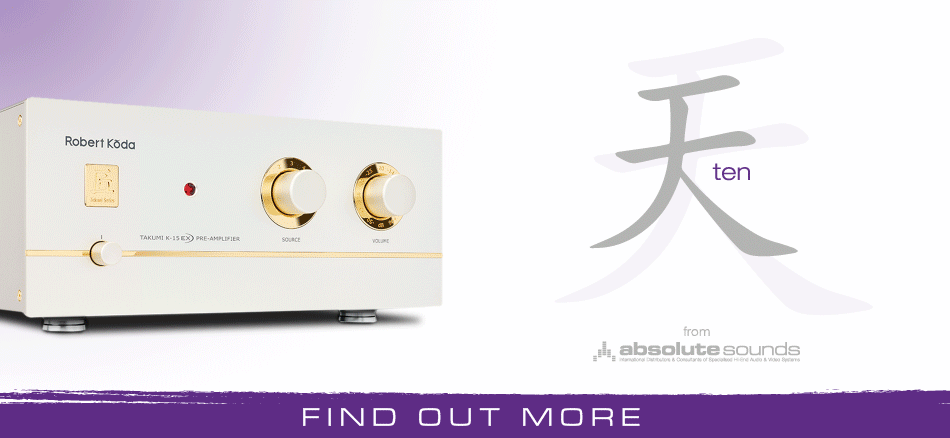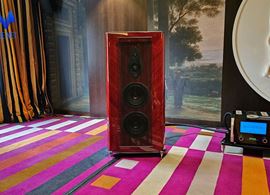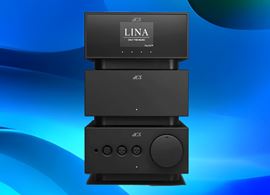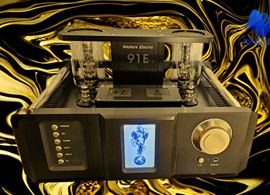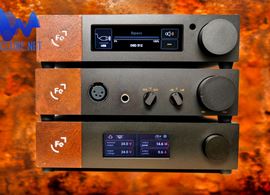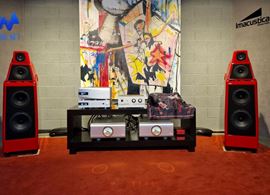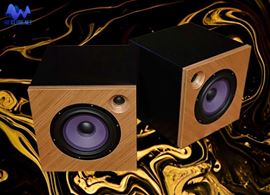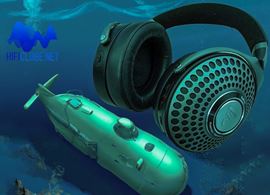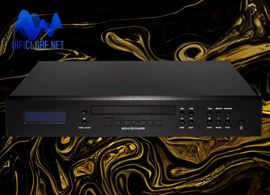Palma DHS-1 is an innovative example of high-quality circumaural dynamic headphones, crafted in Spain. Designed to operate in either ‘open’ or ‘closed’ modes, they will set you back €2,195. Fully justified.
The name pays tribute to Las Palmas, while DHS stands for Dual Headphone System. The headphones can be used in either ‘open’ or ‘closed’ mode simply by rotating the perforated aluminium shutter discs at the back of the earcups without removing them from your ears.
This dual functionality is not unique in the market, but Palma's design is revolutionary in its ingenuity and versatility. Essentially, they operate like a dispenser whose lid can be turned to release the contents, such as pepper or salt. The concept is straightforward and widely used for showers, yet no one has ever considered applying it to headphones.
The Fibonacci formula
However, that's where the comparison ends. The distribution of the shutter discs' holes of varying diameters is not random. It adheres to the Fibonacci Formula: 1.618 (Golden Ratio)*, which governs the geometric progression of the distance between the circles and the reduction in the diameter of the holes. This pattern thus serves both a technical (acoustic) and artistic (visual beauty) function.
*Note: To follow the golden ratio to the T, it should be a spiral.
The most intriguing aspect is that the subjective and objective acoustic differences between the open-back and closed-back modes are surprisingly minimal yet audible and easily discernible. But I digress.
Zero plastics!
The Palma avoids using plastic components: the earphone cups are crafted from Sapele, an African wood renowned for its excellent acoustic properties; the headband and cushions are covered in genuine leather; and the support hooks are made from stainless steel.
It should be emphasised that the wood here is not merely a cosmetic ring for show. It serves as a genuine acoustic box, playing a crucial role in the end result, akin to a speaker cabinet.
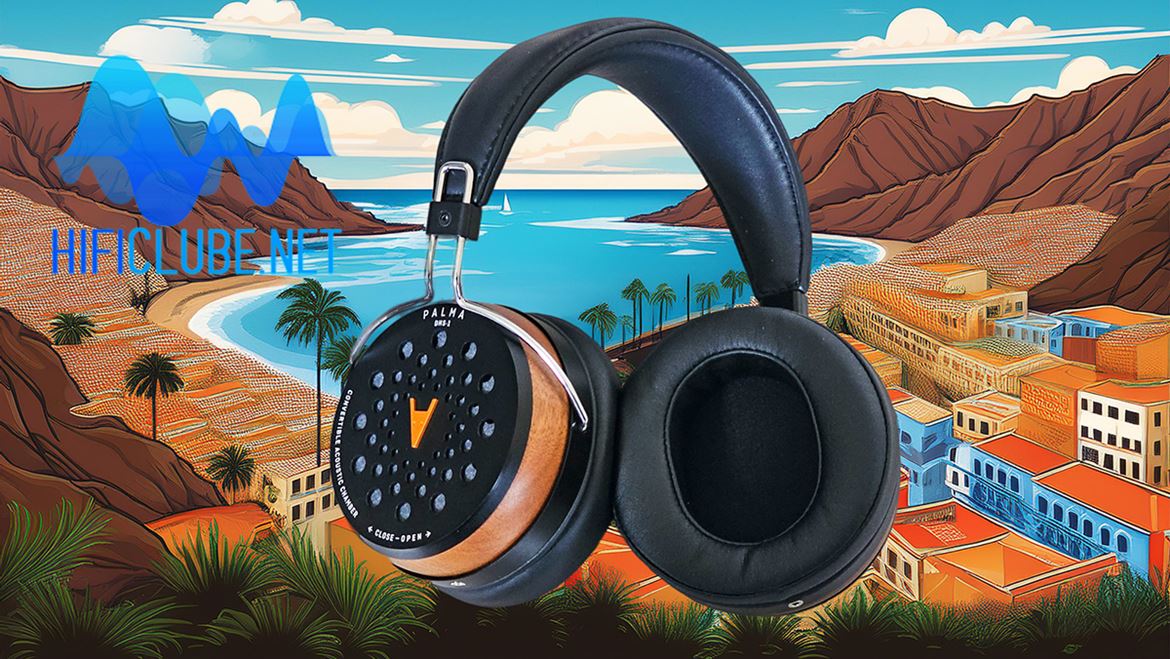
The pleasure of listening transported me to Las Palmas, on the beach, listening to the sea through a couple of conch shells and sipping margaritas.
On the Isle of Dogs, bathing (in music)
Even the orange logo and the perforated shutter discs are made from aluminium. The stylised logo represents an animal, possibly a dog, as the original Latin name for the Canary Islands was Canariae Insulae, meaning Island of the Dogs rather than Island of the Canaries. I'm only speculating, of course.
The build quality is excellent, being both artisanal (handmade) and technically advanced (aluminium shutter discs machined to perfection). While the stainless-steel ‘hangers’ may resemble kitchen utensils, they are easy to adjust, stable, and firm while on your head. However, they only allow vertical adjustment since the earphones do not swivel horizontally. And I must be big-headed, as I reached nearly the full extension limit.
The Palma DHS-1 transported me to Las Palmas, on the beach, listening to the sea through a couple of conch shells and sipping margaritas.
The headband and cushions are soft and comfortable, reasonably distributing the total weight of 490g over your head, and the internal spring doesn't squeeze it too much. The inside diameter allows the cushions to wrap around my ears just right. But it can step on larger ears, affecting the sound quality (a lot): the bass, for example. Try before you buy. Please note: the DHS-1 should be worn over or around, not on the ears!
I listened to the Palma DHS-1 for hours, never wanting to take them off, even though I couldn't shake the feeling of having half a kilo perched on my head. Nevertheless, the pleasure of listening transported me to Las Palmas, on the beach, listening to the sea through a couple of conch shells and sipping margaritas.
Electrodynamic transducers
The DHS-1s utilise electrodynamic transducers rather than the magnetic planar-type membrane, of which I am a die-hard fan. The heart that vibrates within comprises a 50 mm diaphragm made of composite materials featuring a rigid cellulose centre dome, an ultra-thin polyamide suspension ring, a 26 mm coil, and a neodymium magnet.
The sensitivity is high (open: 102 dB; closed: 104 dB), and the impedance is 32 Ohms. The DHS-1s are, therefore, an easy load for any decent amplifier. Of course, they will always sound better with a good amplifier, even if they are also compatible with a mobile phone or a simple dongle.
Luxury product
The DHS-1s are priced at 2,190 €, which is a reasonable cost for a product of this quality, even though it may seem high for a somewhat unknown brand (but not for long, I assure you). The packaging consists of a simple cardboard with a white paper sleeve that displays the product's photo and information.
Inside, however, there is an elegant hard plastic carry case lined with soft fabric showcasing the brand's logo, which houses the headphones along with two black velour bags—one for the headphones and the other for the cables:
- 1.2m cable with 3.5mm jack
- 1.2m cable with 4.2mm Pentacon jack (balanced)
- 2.8m cable with 6.3mm jack
It also comes with a Sapele wood sample ball (I think)—a touch of Spanish refinement.
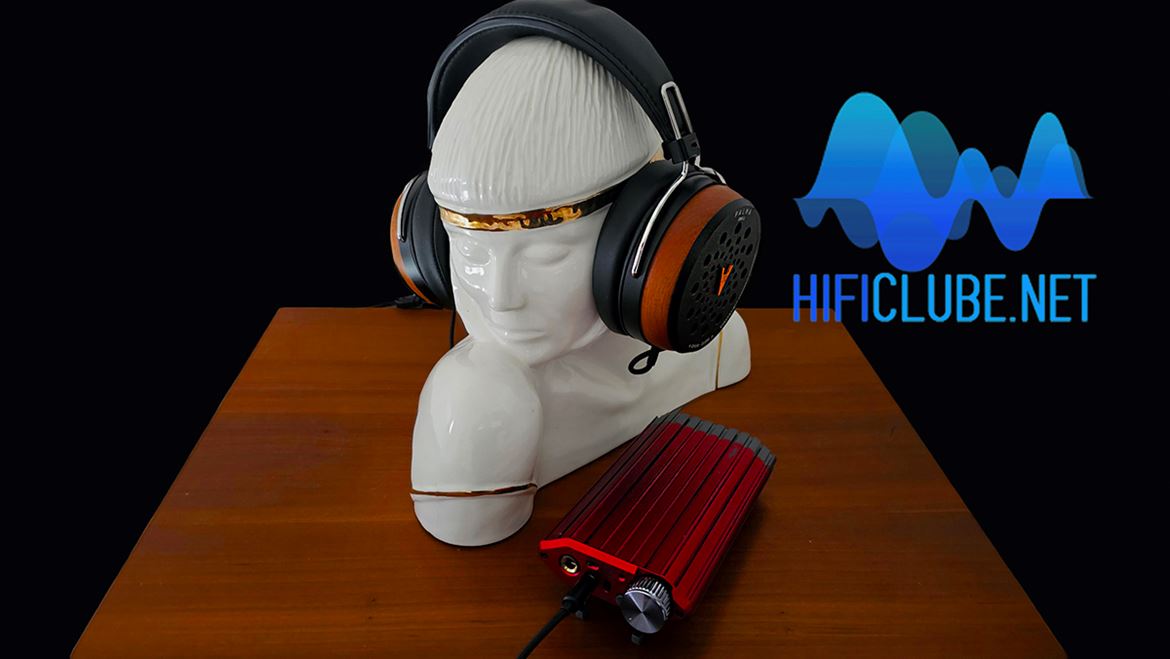
I listened to them for about two weeks with a wide variety of amplifiers, including the iFI Audio Diablo 2 (see below)
Amplifiers: each offers a different taste.
I listened to them for about two weeks with a wide variety of amplifiers: iFI Diablo 2, Chord Hugo 2, Austrian Audio Full Score and iFI GO bar Kensei. The Palma DHS-1s are so neutral that the differences in sound quality between each amplifier are immediately apparent. However, taking into account their acoustic characteristics, I believe the best match would be a valve or hybrid amplifier, such as the remarkable Riviera AIC 10 BAL. Bear with me and we shall see why.
Neutral not sterile
Some individuals might confuse the Palma DHS's neutrality with sterility, aka an overly dry sound. However, sterility implies an inability to ‘deliver’. And yet, the music is all there: pregnant with sounds you hadn't realised were there before. Such is the amount of information that places the Palma DHS-1 in the category of studio monitors. All you need is to get the best out of them tonally.
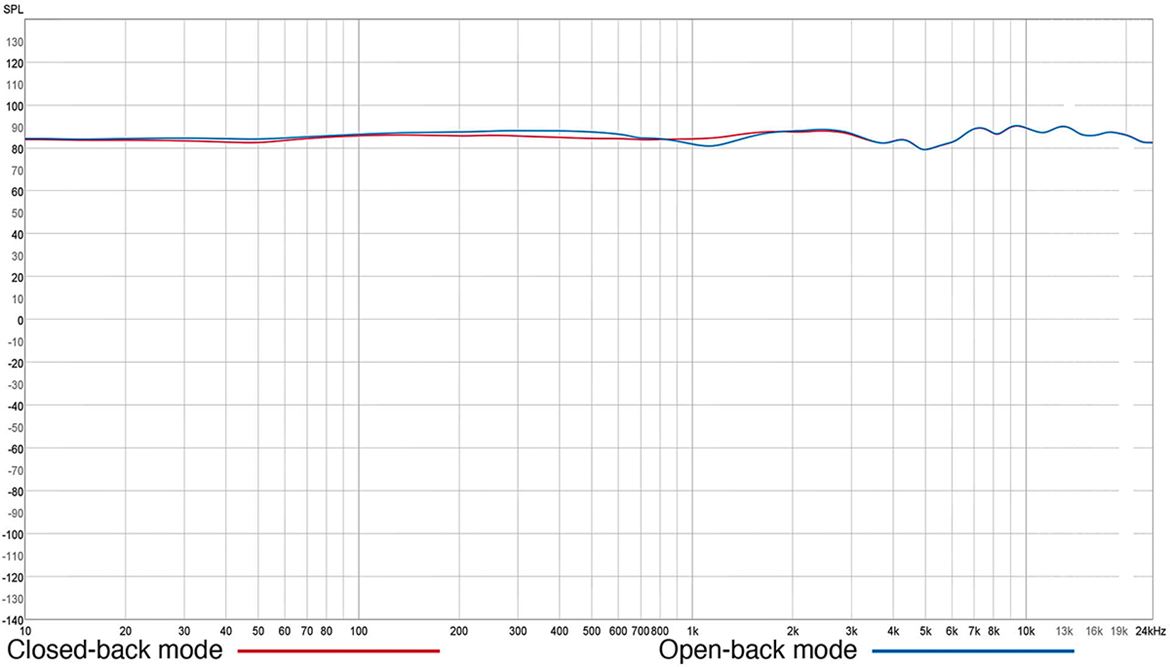
As with speakers, a flat response does not always equate to a more pleasant sound.
Flat response
The factory's choice of a flat frequency response acts like a tabula rasa (blank slate), upon which we can inscribe our preferred equalisation. The frequency response of the DHS-1s is nearly flat, while we are accustomed to the Harman curve and its variants. As with speakers, a flat response does not always equate to a more pleasant sound. Although it may require some acclimatisation, the DHS-1 does not suffer from errors of addition, at most errors of omission, thus resulting in less colouration.
This tonal ‘rejection’ declared by some when listening to the DHS1s arises from the emphasis on mid-high frequencies, to which humans are particularly sensitive. This, in turn, detracts from the overall sound's warmth, and the bass may lack the depth some head-bangers crave—although not the impact: the bass is powerful and tight. Thus, it is hardly surprising that some might perceive the Palma DHS-1s as cold, bordering on clinical, in their musical presentation. However, nothing could be further from the truth.
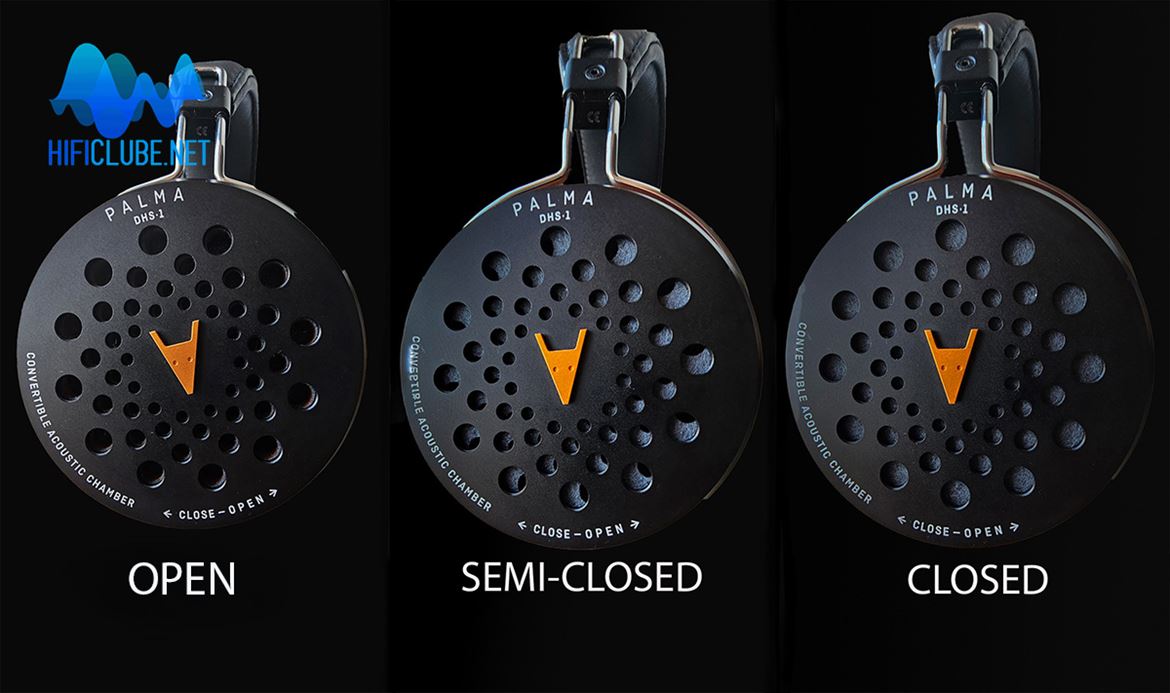
Eventually, however, I concluded that the best sound is achieved in ‘semi-closed/open’ mode—somewhere between open and closed. Give it a try.
Open, closed or in between—that's the question
The first step is to experiment with the open-back and closed-back modes by rotating the covers 14 degrees without needing to remove the headphones from your head, allowing for an instant A/B comparison. As expected, the Palma DHS-1s sound better in ‘open’ mode: the sound has more spatiality. Surprisingly, there is also an increase in bass extension (see graph).
In ‘closed’ mode, the bass is tense and intense but less extended. The difference is particularly noticeable with voices, which are clearer and better projected in closed-back mode but sound slightly pinched and less natural than in full open-back mode. At the same time, the highs have a more ethereal quality in the latter mode too.
Eventually, however, I concluded that the best sound is achieved in ‘semi-closed/open’ mode—somewhere between open and closed. Give it a try. Listen to voices, especially male ones, while slowly turning both shutter discs. After several attempts, you will find a position where they sound most natural, with the perfect balance between body and clarity. For me, the ideal point is somewhere halfway between the two modes. The proverbial half-full or half-empty glass depends on your taste or the music being played (see photo).
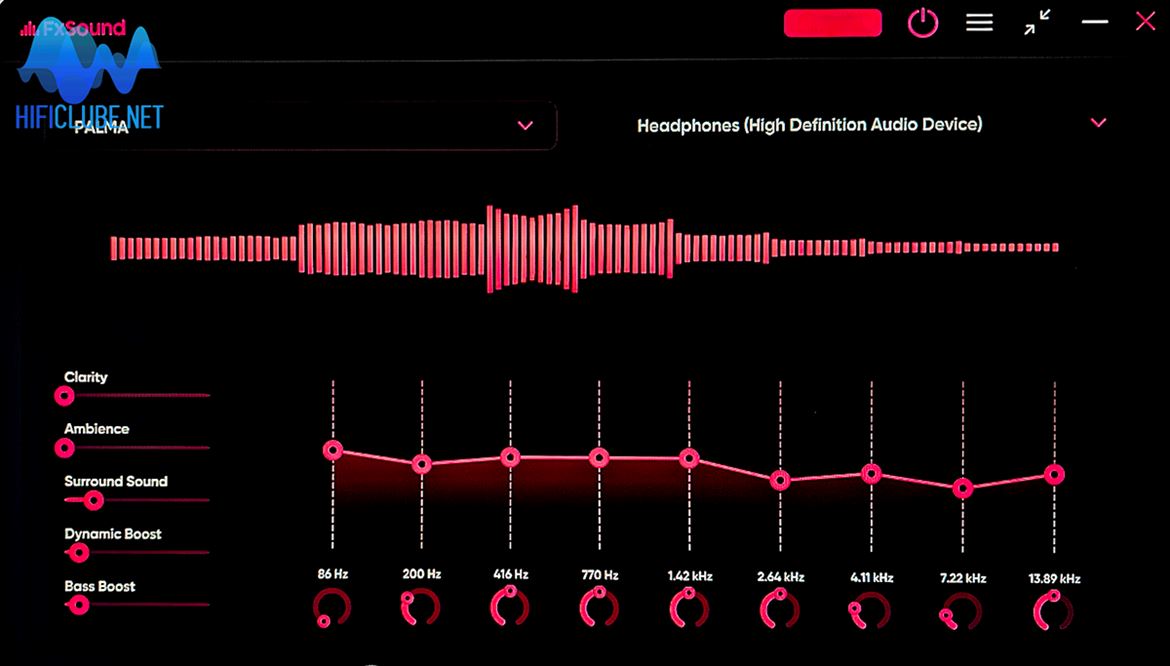
You can have FXSound handle some adjustments for you. Or you may choose to do nothing and enjoy them as originally intended.
Holy Water
Equalisation is like holy water: everyone takes what they desire. In the case of the Palma DHS-1s, you can absolve them of the supposed ‘sin’ of excessive neutrality and dryness through equalisation. However, depending on the complementary amplification, I have no hesitation in recommending them au naturel too.
If you follow my suggestion, adjust them with +2 below 80Hz; +1dB at 416 and 770Hz; +1 at 1.42kHz, -2dB at 2.64kHz, -1dB at 4.11kHz, -3dB at 7.22kHz, and -1dB at 13.89kHz. In other words. Just a little bit here and there, that’s all. You can use the Roon application to tailor it to your liking with the parametric equaliser. Alternatively, you can have FXSound handle some adjustments for you. Or you may choose to do nothing and enjoy them as originally intended.
Auditions
As always, I advise you to bring your own discs or playlists, but here are a few examples of the numerous tracks I've listened to, always with delight. In some instances, old discs that I hadn't heard in ages sounded fresh and new, almost as if being reborn from the ashes, such is the feeling of presence:
‘Behind The Wall’ by Tracy Chapman, from the album ‘Tracy Chapman’
This is a poignant account of domestic violence in the ghetto, sung a cappella. Raise the volume until you can feel the pain that Tracy truly experiences. With that growling dark timbre, that distinguishes it, Tracy's voice is powerful, heart-wrenching and emotive, yet pure, in a dry studio environment with minimal reverb.
‘First We Take Manhattan’, by Jennifer Warnes, from the album ‘Famous Blue Raincoat’
Jennifer Warnes sang in Leonard Cohen's choir, and on this album, she pays tribute to him, surrounded by a remarkable and vast cast of musicians and singers. One of them is drummer Vinnie Colaiuta, who on this track assaults the snare drum with an energy and rhythm reminiscent of the renowned Jeff Porcaro. Jennifer's voice is slightly nasal and enveloped in electronic reverb (the DHS-1s are unforgiving!). However, on this and the subsequent track, ‘Bird On a Wire’, two of the five tracks on which Colaiuta showcases his percussion skills, the Palma DHS-1s prove their studio monitor quality, safeguarding Dave Boruff's saxophone, Jennifer’s voice and choirs, from the percussive vibrations of his relentless drumming.
‘Memória de um beijo’, by Trovante, from the album ‘Terra Firme’.
I felt nostalgic and went to listen to Trovante to recall what a superb band they were. It's true that it all sounds shrouded in electronic reverb hovering over a fluffy bed of synthesisers, but Represas' voice is enchanting. So much so that I listened through to the end of the disc, lost in memories, ‘Perdidamente’...
‘Olha o Fado’, Fausto, ‘Por Este Rio Acima’
Just a sample of an album that stands as a masterpiece of 20th-century Portuguese music, perhaps the greatest. The Portuguese guitars, for once well recorded, the voice of the late Fausto, and the festive choirs constitute an epic musical experience. Fausto was a perfectionist. The Palma DHS-1s do him posthumous justice. Alas, it's not all acoustic roses, sir.
And we could remain here ad aeternum, navigating up this river (Por Este Rio Acima).
Conclusion
The Palma DHS-1 headphones are renowned for their innovative convertible design, allowing users to switch between open-back and closed-back modes effortlessly. With meticulous attention to acoustic engineering, premium materials, and expert craftsmanship, they offer exceptional sound quality tailored for the most discerning audiophiles. Whether in a quiet home environment or a vibrant public space, the Palma DHS-1 adapts to provide an optimal listening experience—and all for (just) €2,195.
For further information, please contact: AJASOM

